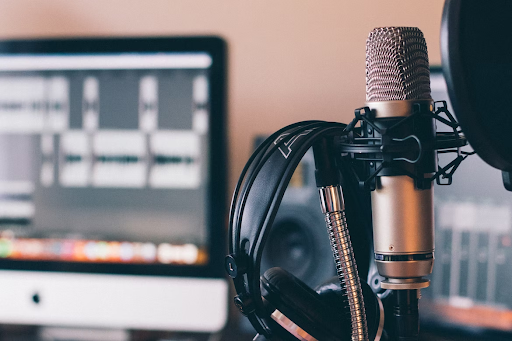
Radio advertising has been one of the most popular and cost-effective ways to get the word out about your product or service since AT&T’s first ever radio commercial more than 100 years ago. With radio, you have the attention of a captive audience, whether they are at home, at work, or, most importantly, in the car.
Technology has moved on apace, especially in the past 20 years, and radio now has to compete with podcasts or our favorite music playlists, which can be accessed from anywhere and everywhere. A study by Pew Research found that 82 percent of teenagers and adults still listen to the radio.
But making a success of your radio advertising campaign means striking the right tone when delivering your message and then making sure you are reaching the right demographic. It’s not just a matter of what you say, but how you say it. That’s why choosing the right voice is one of the most important decisions you will make.
Conveying a credible message with the right voice artist
A radio ad is completely different to TV advertising when it comes to voice work. There are no visual distractions, and there is nowhere to hide. The voiceover artist’s voice must match the brand and be “on message” to ensure credibility. Companies providing voice over services can ensure your ad is delivered with whatever tone you mean to convey. That might mean sincerity, gravitas, excitement, humor or warmth, to mention a few. The point is you need to be clear what you are looking to achieve up front.
To help you identify how the voice artist comes across, think about your target audience. People do not, in general, sit in groups listening to the radio, you are more likely targeting an individual. Who is it and what would appeal to him or her when listening to your ad? If you are speaking to, let’s say, a woman in the 65+ bracket, you will want a different tone to someone reaching out to Generation Z.
Also, think about the long term. Check if the voice actor you use is likely to be available for future work, as that very voice becomes part of your brand and helps to increase its familiarity in your listening audience.
Radio stations are demographically segmented
The alternative to radio is online advertising on websites and social media platforms. Here, they talk about targeting the right demographic as if they invented it. But radio has been doing this for years.
Hard rock, talk, classical, modern music, sport, news – each station has its own theme and is aimed at a particular demographic. For example, talk radio listeners are mostly over 65, while the recent explosion in stations focused on 80s and 90s music is clearly aimed at Generation X and older millennials. Also, keep in mind local radio stations, which have a hyperlocal listenership.
Choosing the right station is an important and quite easy way of targeting your desired listener demographic.
Areas where radio advertising works best
Ultimately, radio remains a great platform for advertisers to capture the attention of their audience – if they do it right. That means choosing the right voice and the right outlet for your radio ads. It is particularly powerful in the following areas:
- Reaching older demographics – especially over-65s, but also over-40s.
- Promoting well-established brands – you can focus on the actual promo.
- Putting the word out about a specific forthcoming event on local radio
Lesser known brands might benefit more from a medium that includes visual cues such as TV advertising, while those targeting younger demographics, let’s say those aged 30 or younger, should give consideration to podcast advertising or even social media.
These are all just guidelines, and every advertising campaign needs to be considered on its own merits. One thing is certain, however. Radio will remain an important part of the advertising mix for decades.
Interesting Related Article: “How To Create Lifelike Voiceovers With An AI Voiceover Generator“
